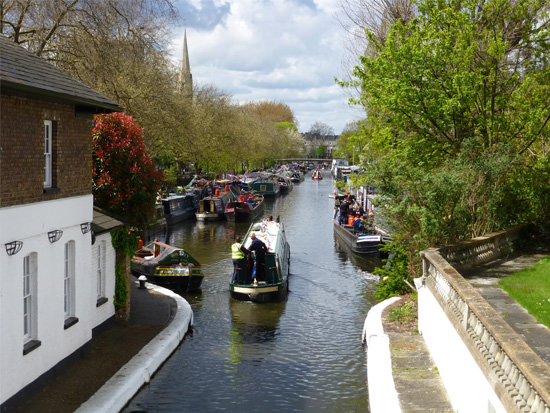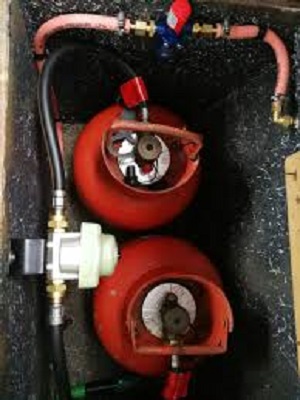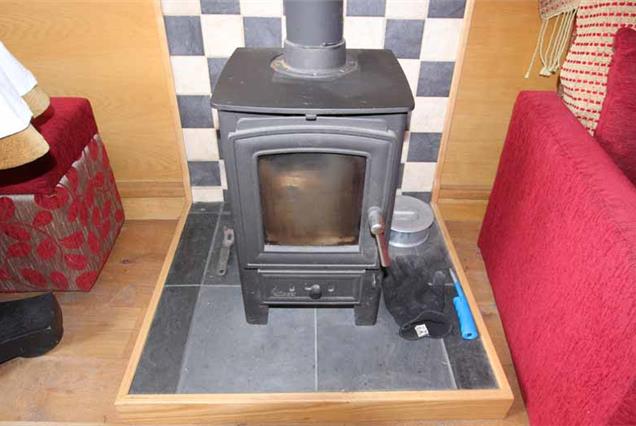Tips on checking your boats safety
systems ready for Spring cruising

Ventillation
Vents can get dusty or
greasy over time and get clogged up so that they work inefficiently and reduce
the airflow. It’s easy to overlook this thinking that your boat passed it’s
boat safety examination a year or two ago. Ideally you should check your vents
at least once before the boating season. Vacuum out louvre door vents or use a
small brush to dislodge dust. Give mushroom vents and vents above the galley a particularly
good clean as these may have built up a residue of grease from cooking, so
remove the gauze if possible and clean in hot soapy water. Also check any vents
near electrical equipment are not blocked, and also any vents in the cabin
bilge, this will help reduce condensation and corrosion.
_thumb.jpg)
Dirty mushroom vents shown above, demonstrating how vents can block up.
Fire Prevention
Reducing dust around larger
appliances such as inverters will help to avoid overheating. Also check for
loose screws and poor connections which can cause electrical resistance and
have the potential to cause a fire. Keep gas lockers free of equipment such as
mooring pins and mallets to avoid damage to the gas pipework. Ensure the gas
locker drains are not blocked and check the locker for signs of corrosion and give a protective coat of paint to treat any rust. Fitting a Bubble detector on the gas supply is the best way to monitor the gas system. The Bubble tester is a gas leak detector and is intended for in-line installation, and should be connected into the gas system close to the outlet side of the regulator. It provides an instant visible check on gas soundness from the outlet side to each installed appliance, a leaking system being positively indicated by bubbles appearing in the glass-sighting chamber. The Boat Safety Scheme and the new British Standard both recommend that one be fitted in an installation. This Gas leak detector is a very simple but highly effective unit, It is designed to be connected into the gas pipe supply after the gas bottle regulator in the gas locker. Once plumbed in, all the gas appliances are turned off and the gas turned on, you then simply push and hold the red knob down for about 10 seconds and check the glass sight glass for bubbles. If you get any bubbles after about 2 seconds you have a leak and should turn the gas off. No bubbles mean no leaks and it is safe to use the gas.

Check your battery connections and engine wiring for issues that could cause a fire hazard.
Check oil and diesel filters for leaks, all of the pipework especially the joints and valves for leaks. If you keep petrol aboard for your generator make sure to store it away in a locker.
Gas Appliances
On a gas oven light the burners and check the flame is blue and regular. If the flame is yellow it could mean that the stove needs attention. Clean the hob burners and grill. Get a professional Gas certified person to service any gas appliances annually.
Stove Maintenance
Check the door seals and the flue seals where the flue meets the chimney to make sure there are no gaps and no water leaking in down the flue which could cause corrosion. Clean around the firebrick lining and check it's not excessively worn. Clean out the ash box. Check the stove for cracks or damage and check the area surrounding the stove for any signs of heat damage. Looking at the chimney from outside the boat; check the stove collar on the roof fits well and that the chimney is soot free.

Smoke and Carbon Monoxide Alarms
If you have a fuel burning appliance you need to have a carbon monoxide alarm fitted. Many people don’t realise the dangers of Carbon Monoxide poisoning, or CO as it’s known. It only takes one faulty appliance, blocked flue or a build-up of engine exhaust gas to potentially harm you and your family. Make sure the alarm conforms to safety standards as being suitable for boats. Test the battery and clean out any dust, this applies to smoke detectors too. If you own a large boat it's a good idea to have more that one of each detector on board, a good idea also is to link alarms so that if one goes off it will set the others off too. Make sure you have a backup by carrying spare alarms and batteries should one of them fail. There is a handy series of videos on the Boat Safety Schemes website (BSS) which will help you understand what Carbon Monoxide is, the symptoms of CO poisoning, how to choose the right alarm to protect you and your family, and importantly what do if your alarm goes off. You should test the alarm routinely - when you return to the boat after a period away and weekly when you are staying aboard. Push the button not your luck.
Fire Safety
Whilst fire is unlikely on a boat that is well maintained to minimum safety standards, it is a grave concern to boaters who can be caught unawares or in a situation where escape is difficult. All boats must carry fire extinguishers, this is required by the BSS.
Make a Fire Action Plan Now!
A reliable alarm alone, won’t by itself keep you safe. All crew and passengers must know what to do in an emergency - make a fire action plan, make sure everyone knows it, every time you sail. Know what to do should fire break out, have a fire plan and everyone aboard must know it too!
For more information on Boat Safety see the Boat Safety Scheme website.
Let us know if we've forgotten anything, or if you have any other tips for safety checks aboard your narrowboat?